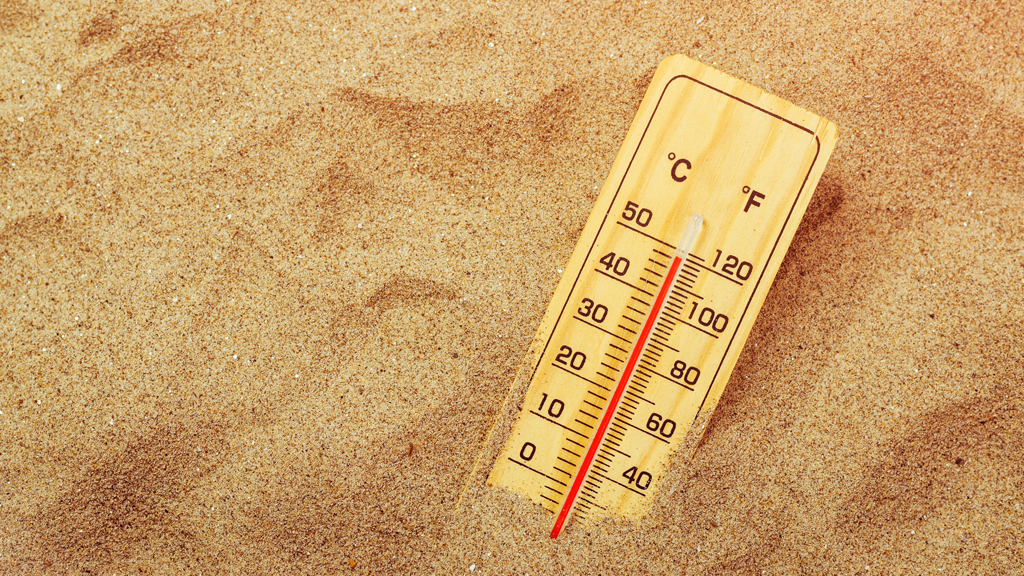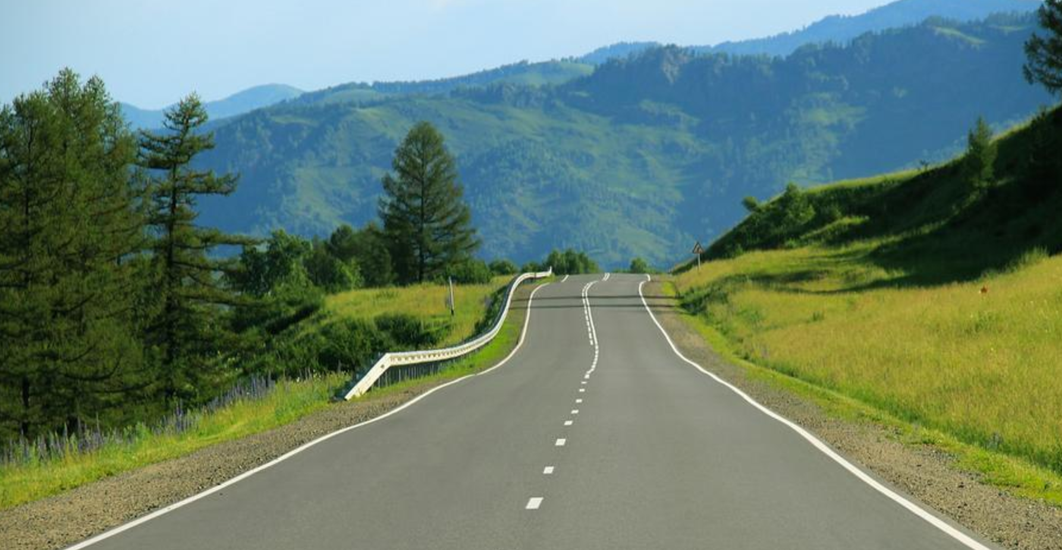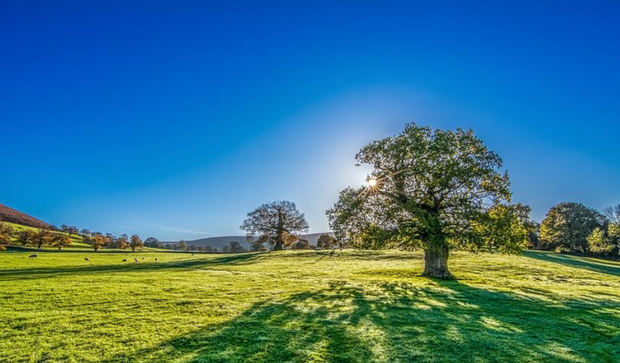Elementary |
Why Do Surfaces Warm Differently?

Is Lesson Plan Physical Science Elementary Grade K
Sensemaking Checklist




Introduction
Today's task, Why do surfaces warm differently?, creates an opportunity for students to investigate how the Sun's light warms Earth's surface. Students engage in science and engineering practices including making careful observations of a phenomenon to ask questions and developing and carrying out an investigation to see if we can keep things cool when the Sun is out.c


Experiencing the Phenomena (What am I exploring today?)
Ask students what they know about the sun and have them share with a partner. Next, have them share their ideas with the class. Pre-K and early elementary students may notice that the sun is bright and makes you hot. Upper elementary students may add the sun can hurt your eyes, plants need it's light to grow, and it comes out in the day time.
Tell students that today they are going to investigate how sunlight warms the different surfaces we find on the Earth. Have students go outside and make some observations about the different surfaces they notice. Surfaces could include grass, sidewalk, blacktop, water, rocks, etc. As students identify the different surfaces, write them down on a whiteboard or clipboard to keep track of them. Next, have students work in pairs or small groups to investigate the temperature of the surfaces. Students should just make qualitative observations, for example, the rocks feel warmer than the grass. If possible, students could compare the temperature of the same surface in the shade and in the sun.
If going outside is not possible, use the pictures above and prompt students to identify the different surfaces they notice. Then ask them to think about the temperature of those surfaces. Which ones do they think would be warmer than others? As students share their predictions, prompt them to explain why they chose the surfaces they did. You might ask:
- Can you tell me why you chose that surface...
- Why do you think that surfaces would be warmer/colder...
- Does anyone else have an experience that is the same or similar...
Guidance: Students will be taking on the role of a scientist. The goal is to get students thinking about how the sun's light warms Earth's surface. Many students will have experience with different surfaces and their temperature. Allow students to share their experiences and relate them to the things they are noticing outside or in the pictures. Sharing their experiences will provide opportunities for students to practice speaking and listening skills as well as build a culture of community.
After students have shared their experiences, prompt them to think about why the different surfaces, which get light from the same sun, might be different temperatures. Then ask them to think about a question they have about why surfaces are different temperatures. Have students share their questions one at a time while you write them down.
Guidance: Our goal here is to promote student thinking about what they wonder about how the sun warms the Earth and the surfaces on it. ALL student questions are okay at this point. Our goal is to motivate curiosity and not distinguish between "good questions" and "bad questions" or "right questions" and "wrong questions". Common questions will arise for most students, which is what this task builds on.
Investigative Questions (What questions do I have about what I just saw?)
Investigative questions are common questions kids may ask after they are introduced to the phenomenon. Although questions may vary, many students are curious about what causes the surfaces exposed to sunlight to be different temperatures.
Guidance: It is important to allow time for thinking. Many students have ideas and questions but need time to formulate their idea or question into words. Younger students may benefit from drawing a picture of something they want to know more about and older students may benefit from writing things down first before they share. As adults, we may be tempted to give them questions we feel might be important to explore, however, we need to refrain from this and allow our students to practice asking their own questions. Our goal here is for students to consider all of the different factors that may have noticed before but never really thought about.
Common Questions:
- Does the Sun shine on things different(ly)?
- Why is the Sun colder when it is behind a cloud?
- How does the Sun make the beach/blacktop/driveway so hot?
- Why does the grass feel cool even when the Sun is out?
- Are things hotter when it's bright out?
- Do things get cold when it's bedtime (when it is dark)?
We want to focus on one question in particular at this point:
- Does the Sun shine on things different(ly)?
- Why is the Sun colder when it is behind a cloud?
- How does the Sun make the beach/blacktop/driveway so hot?
- Why does the grass feel cool even when the Sun is out?
- Are things hotter when it's bright out?
- Do things get cold when it's bedtime (when it is dark)?
Ask students to think about sunshine and ask, "Do you think the Sun shines on the surfaces is different or do you think the surfaces the Sun shines on are different?" Lead students to the idea that the Sun shines the same on all the surfaces so the different temperatures we observed outside must be because of the surfaces.
Connection Guidance: Students may make connections to previous concepts depending on their grade level. For example, early elementary students may mention that the grass is cooler than the rocks. Conversely, their upper elementary/middle school family members may mention that light transfers energy from the Sun.
Conducting an Investigation
We need to develop an investigation to figure out more about how the Sun's light affects different surfaces on Earth to answer our question, "Does the Sun shine on things differently?"
Have students think about how they could investigate the different surfaces found on Earth to figure out which ones get warm and which ones stay cool. Have students talk in small groups and then share their ideas with the class.
You may want students to each share one idea about how they could investigate how different Earth surfaces are warmed by the Sun. To help students formulate ideas, consider having bowls (or other open containers) containing different surface materials - like sand, soil, rocks, and water - where students can see them and ask, "What could we do to see which one of these things gets the warmest from the Sun's light." This strategy is especially useful when working with younger students that have background knowledge but need help with language.
Guide students toward consensus on placing bowls of different surface materials in sunlight. Make sure to use at least four different materials - soil, water, rocks, and sand. This can be done as a class or in small groups depending on the age of students and space. Have students make some observations and, as they share them with the class, write them on the board or other public spaces. Next, have students number a sheet of paper 1-4. Then have them make some predictions about which material they think will be the warmest (#1) and which will be the coldest (#4). Alternatively, just ask students to predict which surface will be warmest and which will be coolest.
When students are finished making their predictions, place the four bowls outside in the sunlight or in the classroom under a heat lamp for 30 minutes or more. (If using a heat lamp, do a test run to make sure the lamp and the materials do not get too hot). After 30 minutes, have students make some visual observations as they may notice bubbles in the water or the soil changing color. Next, have them touch the substances with there fingertips to see which ones are warm and which are still cool. You can also use a thermometer to measure temperature after students feel the materials.
Last, have students compare their observations with the predictions they made at the beginning of the investigation.
Guidance: There are many different ways to do this investigation. However, no matter how you set this up, the goal is for students to start noticing the things they see every day and start asking questions about them. Why is the grass cooler than the sidewalk? It is not the expectation for early elementary students to be able to explain how absorption or actually use and read a thermometer. Instead, we want them to authentically engage in scientific practice to figure out science concepts that are conceptually appropriate for them, the sand is warmer than the soil, for example.
After students have figured out some things about how different surfaces warm under the Sun's light, ask them about the idea of shade. This can be prompted by going outside or by using the picture above and asking, "If you were outside and it was really hot, where, in this picture would you sit to cool off?"
You might ask, "Should we investigate?!"
Making Sense (What did we figure out?)
What questions can we now answer about how the Sun warms Earth's surfaces?
Looking back to our initial questions:
- Does the Sun shine on things different(ly)?
- Why is the Sun colder when it is behind a cloud?
- How does the Sun make the beach/blacktop/driveway so hot?
- Why does the grass feel cool even when the Sun is out?
- Are things hotter when it's bright out?
- Do things get cold when it's bedtime (when it is dark)?
Our focus was to figure out that the Sun warms Earth's surfaces, but not all surfaces warm the same. Using the think-pair-share strategy, have students discuss what they figured out today. Tell students to use their predictions and data from the investigation with the bowls of surface materials to support their ideas. You could also provide sentence starters, for example:
- Today I figured out...
- The substance that got the warmest was...
- The substance that was the coolest was...
- Shade keeps the Sun...
When students are done sharing, ask why it might be important to know what surfaces get hot and what surfaces stay cool. Many students will bring up ideas about walking barefoot on the grass, a sandy beach, or across the blacktop. Others will share experiences sitting in the shade. Agree that knowing about how the Sun warms Earth's surface is important and will help them make good decisions about being safe and staying cool.


